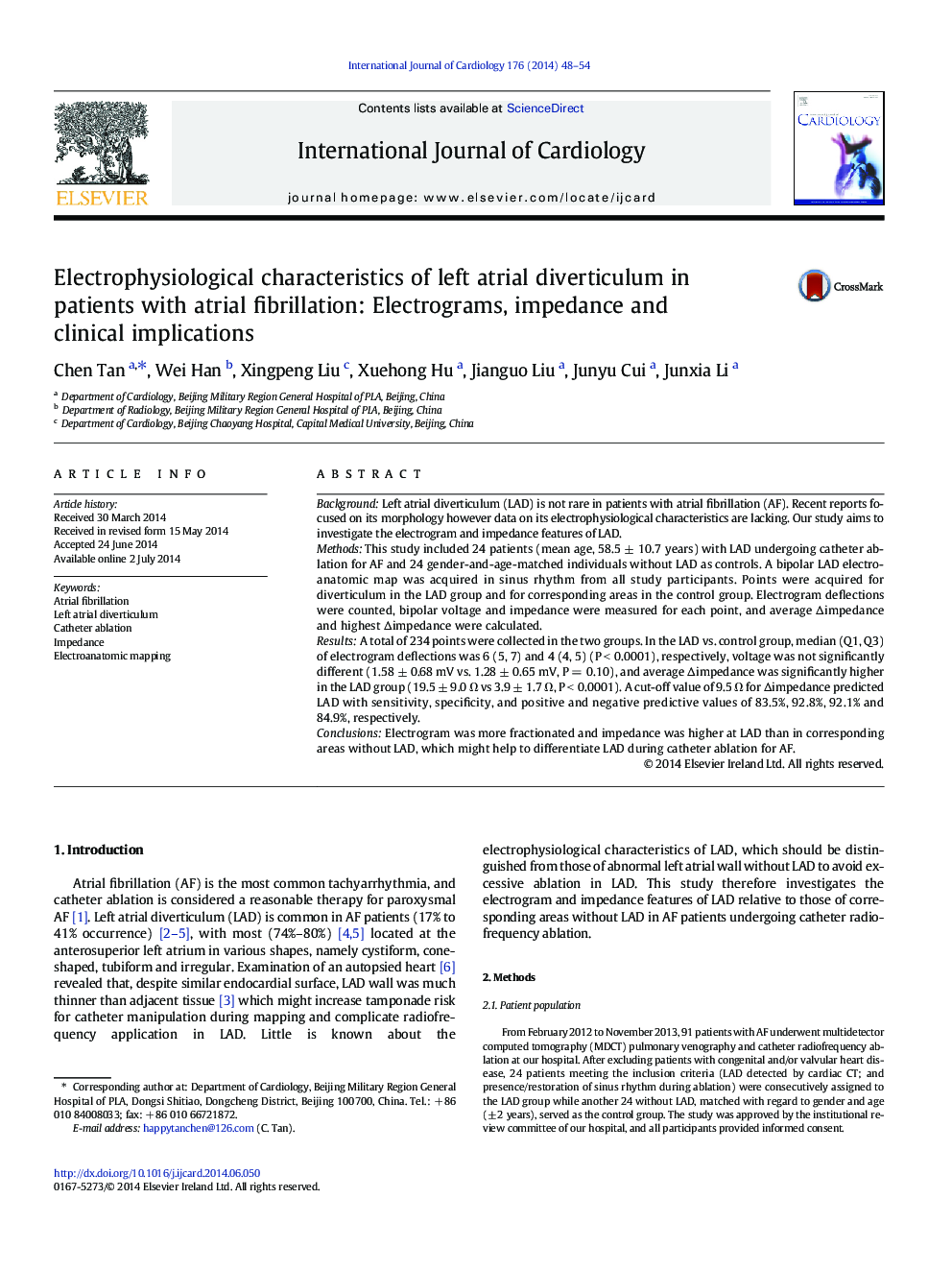| Article ID | Journal | Published Year | Pages | File Type |
|---|---|---|---|---|
| 5970642 | International Journal of Cardiology | 2014 | 7 Pages |
â¢This study documented the basic electrophysiological features of LAD.â¢There were more fractionated signals at diverticulum area.â¢Voltage of electrograms was not significantly different in the LAD and control group.â¢The impedance in diverticulum was much higher than that of its adjacent area.â¢A cut-off value of 9.5 Ω for âimpedance predicted LAD.
BackgroundLeft atrial diverticulum (LAD) is not rare in patients with atrial fibrillation (AF). Recent reports focused on its morphology however data on its electrophysiological characteristics are lacking. Our study aims to investigate the electrogram and impedance features of LAD.MethodsThis study included 24 patients (mean age, 58.5 ± 10.7 years) with LAD undergoing catheter ablation for AF and 24 gender-and-age-matched individuals without LAD as controls. A bipolar LAD electroanatomic map was acquired in sinus rhythm from all study participants. Points were acquired for diverticulum in the LAD group and for corresponding areas in the control group. Electrogram deflections were counted, bipolar voltage and impedance were measured for each point, and average âimpedance and highest âimpedance were calculated.ResultsA total of 234 points were collected in the two groups. In the LAD vs. control group, median (Q1, Q3) of electrogram deflections was 6 (5, 7) and 4 (4, 5) (P < 0.0001), respectively, voltage was not significantly different (1.58 ± 0.68 mV vs. 1.28 ± 0.65 mV, P = 0.10), and average âimpedance was significantly higher in the LAD group (19.5 ± 9.0 Ω vs 3.9 ± 1.7 Ω, P < 0.0001). A cut-off value of 9.5 Ω for âimpedance predicted LAD with sensitivity, specificity, and positive and negative predictive values of 83.5%, 92.8%, 92.1% and 84.9%, respectively.ConclusionsElectrogram was more fractionated and impedance was higher at LAD than in corresponding areas without LAD, which might help to differentiate LAD during catheter ablation for AF.
